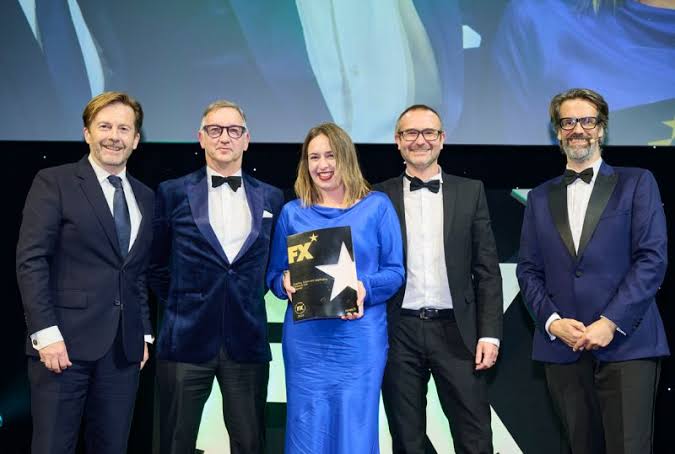Kate Whelan: Driving Innovation at Keolis in Public Transport
Kate Whelan’s leadership at Keolis, a global leader in public transportation, has been transformative. Her influence is not only a reflection of her deep expertise in transport systems but also of her passion for innovation and sustainability. In an industry where efficiency, safety, and adaptability are key, Whelan’s role in steering Keolis toward the future of public transport is a vital case study for anyone interested in modern mobility solutions.
Whelan’s journey within Keolis has been characterized by her commitment to revolutionizing public transportation through the use of cutting-edge technologies and a forward-thinking approach. By blending operational excellence with a vision for sustainable growth, she has cemented her reputation as one of the most dynamic figures in the sector. This article dives into Whelan’s contributions to Keolis and explores her role in leading the organization into a new era of public transport innovation.
Background on Keolis
Founded in France, Keolis is one of the world’s leading public transport operators, managing everything from buses and trains to trams and autonomous vehicles. With operations across 15 countries, Keolis aims to enhance the passenger experience while driving environmental sustainability through a variety of smart transport solutions. The company has long prided itself on its commitment to reducing carbon emissions, embracing digital transformation, and improving the accessibility of public transit networks.
The company’s mission is to develop safe, sustainable, and integrated transport networks that not only meet current demands but also anticipate future challenges. Whelan’s role as a key figure at Keolis is central to this mission. Her efforts in driving forward technology, sustainability, and policy changes have made her a pivotal player within the company.
Early Career and Education
Before joining Keolis, Kate Whelan had already established a strong career in public transport and mobility sectors. She earned a degree in engineering, followed by a master’s in urban mobility, which laid the foundation for her interest in smart cities and sustainable transportation. Her early career saw her working with government agencies and private sector companies, gaining experience in developing strategies for transportation infrastructure and urban planning.
Whelan’s understanding of the multifaceted challenges facing public transportation systems made her an ideal candidate for leadership roles in the industry. Her technical expertise, combined with a keen sense of operational logistics and customer needs, allowed her to address the unique challenges of the sector, from infrastructure development to policy implementation.
Kate Whelan’s Role at Keolis
Kate Whelan joined Keolis at a time when the public transport sector was facing unprecedented challenges, particularly in the wake of rapid urbanization, environmental concerns, and the need for digitization. As urban populations grew, so did the need for efficient, reliable, and environmentally friendly transport solutions. Whelan’s leadership has been crucial in addressing these issues head-on, driving forward initiatives that blend technology and sustainability to offer smarter public transport options.
Whelan serves as an executive within Keolis’ senior leadership team, where her responsibilities span strategy development, innovation, and operational excellence. She has been instrumental in launching new transport modes such as electric and autonomous vehicles, while also improving traditional services like buses, trams, and trains. Whelan’s focus on integrating these modes into a seamless network is a reflection of her commitment to creating a user-centric transportation system.
Leadership in Innovation
Whelan’s leadership at Keolis has been defined by her focus on innovation. Under her direction, Keolis has embraced emerging technologies such as AI, big data, and the Internet of Things (IoT) to improve the efficiency and reliability of its services. One of the most notable examples of this is Keolis’ use of predictive maintenance tools. By collecting and analyzing real-time data from vehicles and infrastructure, Keolis can anticipate when repairs are needed, reducing downtime and improving service reliability.
In addition, Whelan has championed the introduction of autonomous vehicles into Keolis’ networks. Keolis has launched pilot programs for self-driving shuttles and buses in various cities across Europe and North America. Whelan has been at the forefront of these initiatives, ensuring that Keolis stays ahead of the curve in terms of innovation and adaptability. Her work in this area is an example of her belief that technology should be used to create smarter, safer, and more efficient public transport systems.
Furthermore, Whelan has been a vocal advocate for the use of AI in optimizing public transport schedules. By using AI algorithms, Keolis can better predict passenger flows and adjust services accordingly, ensuring that buses and trains are running when and where they are needed most. This helps reduce waiting times for passengers while also making the transport system more energy efficient.
Sustainability Initiatives
Sustainability is another key area where Whelan has made a significant impact. As the world grapples with climate change, public transportation plays a vital role in reducing carbon emissions. Whelan has been a driving force behind Keolis’ efforts to transition to greener forms of transport. Under her leadership, Keolis has increased its investment in electric buses and trams, reducing the company’s reliance on fossil fuels.
Whelan has also worked to make Keolis a leader in the circular economy. This involves finding ways to reuse and recycle materials within the company’s operations, reducing waste, and minimizing environmental impact. For example, Keolis has implemented a system for recycling the batteries used in its electric buses, ensuring that the materials are reused rather than discarded.
One of Whelan’s most ambitious sustainability initiatives has been Keolis’ commitment to achieving net-zero carbon emissions by 2050. This involves a wide range of measures, from transitioning to renewable energy sources to reducing energy consumption across its operations. Whelan’s leadership in this area demonstrates her long-term vision for the future of public transport as a key component of sustainable urban living.
Improving the Passenger Experience
In addition to her work on technology and sustainability, Whelan has also focused on improving the passenger experience. She believes that public transport should be more than just a means of getting from point A to point B; it should be a service that enhances the quality of life for its users. Under Whelan’s leadership, Keolis has invested heavily in improving the comfort, accessibility, and convenience of its services.
One of Whelan’s key initiatives has been the implementation of mobile ticketing and contactless payment systems. These systems make it easier for passengers to pay for their journeys, reducing the need for physical tickets and making the entire process more convenient. Whelan has also overseen the introduction of real-time passenger information systems, which provide up-to-the-minute updates on service disruptions, delays, and arrival times.
Accessibility has been another major focus for Whelan. She has worked to ensure that Keolis’ services are accessible to everyone, including people with disabilities. This includes making stations and vehicles wheelchair-accessible, providing audio-visual announcements, and training staff to assist passengers with special needs.
Adapting to Post-Pandemic Challenges
The COVID-19 pandemic has had a profound impact on public transport, with ridership levels plummeting and concerns about health and safety rising. Whelan’s leadership during this period has been critical in ensuring that Keolis was able to adapt to the new reality. She spearheaded efforts to increase the frequency of cleaning and disinfection of vehicles, implement social distancing measures, and introduce contactless payment options to reduce physical contact.
Whelan also recognized the need to rebuild public confidence in the safety of public transport. Under her direction, Keolis launched public information campaigns to reassure passengers that the company was taking all necessary steps to protect their health and safety. This included transparent communication about the measures being implemented and the use of technology to monitor passenger flows and adjust services to avoid overcrowding.
Future Vision
Looking to the future, Whelan is focused on making Keolis a leader in the transition to sustainable, connected, and smart mobility solutions. She believes that public transport has a vital role to play in creating liveable cities, and her vision is one where public transit is the backbone of urban mobility, seamlessly integrated with other forms of transport such as cycling, walking, and car-sharing.
Whelan is also committed to fostering partnerships between Keolis and other stakeholders, including local governments, tech companies, and urban planners. She believes that collaboration is key to achieving the ambitious goals of reducing traffic congestion, lowering carbon emissions, and improving the quality of life in cities.
Conclusion
Kate Whelan leadership at Keolis has been marked by her dedication to innovation, sustainability, and improving the passenger experience. Her work in driving forward new technologies, such as autonomous vehicles and AI, as well as her commitment to reducing Keolis’ environmental impact, has set her apart as a forward-thinking leader in the public transport sector.
Also Read: Unveiling the Truth: Trey Gowdy Forehead Surgery Rumors Explained
Through her efforts, Whelan has not only helped to position Keolis as a global leader in public transportation but also demonstrated the vital role that public transit plays in creating sustainable, liveable cities. As Keolis continues to evolve under her leadership, Whelan’s vision for the future of public transport is one that is smarter, greener, and more connected than ever before.




Post Comment